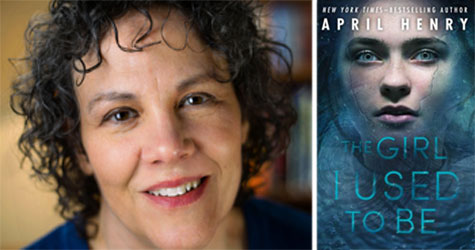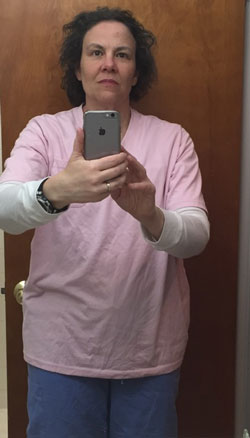
A lot of research goes into my novels in order to make them believable. Beyond making sure the details are accurate, some of the things I’ve learned are literal lifesavers and some are just plain fascinating. Here's a short list of fun facts I’ve learned over the course of my career, including while researching my latest mystery for teens, The Girl I Used to Be.
1. People believe what you present
 I took an Urban Escape and Evasion course. On the final day, you must escape your “kidnappers” and then not be caught by ten hunters. The hunters have a photo of what you’re wearing and know the exact seven-mile route you have to take.
I took an Urban Escape and Evasion course. On the final day, you must escape your “kidnappers” and then not be caught by ten hunters. The hunters have a photo of what you’re wearing and know the exact seven-mile route you have to take.
We had been allowed to cache some thrift store clothes along the route the day before. I had found a pair of blue scrub pants, but couldn’t find a scrub top. I had to settle for a plain white T shirt and a plain pink T shirt. But that was enough for people to treat me like a nurse.
For extra credit, it’s easy to make your own fake ID at a FedEx Office. Copy a logo from the Internet, use a selfie from your phone, give yourself a real sounding title, and print it on a color printer. Cut it out, laminate it, and buy a lanyard. Boom! You’re a Unit Secretary II for Marina Del Rey Hospital.
2. I do care if I’m in a DNA database
I used to think it would be a good thing if we had a national DNA database. That was before I read about a California case where a man died during a robbery. At the autopsy, they swabbed his fingers, hoping to find trace DNA from his killer. They did, and it matched a known felon. He was awaiting trial when his defense attorney realized he had actually been hospitalized the night of the murder. He had never met or even been in the same room as the victim.
So how did it happen? It turns out both men were handled by the same paramedics—and the same pulse oximeter was used on both. DNA tests are now so sensitive that it picked up the tiny amount transferred from one patient to the next. The arrested man narrowly escaped going to prison for a murder he didn’t commit.
3. Paracord is amazing
Paracord is a kind of lightweight rope that you can pick up at a big box store or sporting goods shop. You can use paracord to make a shelter, to improvise a splint. It’s also handy if you’ve been kidnapped. So replace your shoelaces with it, or buy a bracelet woven of it (and as a bonus, these bracelets often come with a plastic handcuff key in the buckle).
If you’re bound with duct tape, zip ties or rope, thread your paracord between your wrists, make a loop on each end, stick your feet in the loops, and pedal madly in the air. The paracord will saw through your bonds. I’ve even heard it will work on handcuff chains, but you would probably need Cross-Fit abs and a couple of spare hours.
4. Handcuffs can be both simple and hard to get out of
In 1912, the Peerless handcuff was the first to feature the swing-through ratchet. Handcuffs haven’t changed a lot since then. You can find a million YouTube videos showing you how to pick or shim your way out of single-locked cuffs with a bobby pin or paper clip. I’ve even done it with a dipstick.
What most of the videos don’t mention is that cops are going to double lock your hands behind you, so the methods you’re learning will only work if you are the victim of a kidnapper in a hurry, or if you have a lot of flexibility, time and privacy.
Bonus info: You can fly with handcuffs in your carryon.
5. If you don’t look upset, people won’t ask questions
A few months ago, I met with an expert in self defense for the blind, who brought with him a girl who was blind and her cane. They helped fine tune the climactic scene in an another upcoming book, in which the blind heroine disarms the sighted bad guy. At one point, the real blind girl was choking the expert with her cane while he was on his knees in the DoubleTree lobby. People checked out the scene, looked at his smiling face, and kept walking.
When writing my latest book, The Girl I Used to Be, I wondered how hard it would be to run through the woods in handcuffs. I drove to a wooded park, put on handcuffs, and started running. (It’s not that hard just as long as you swing your arms in tandem.) That section of park is usually deserted, but all of a sudden, a bunch of runners appeared. How would I explain things? I decided to smile. The runners looked at my cuffs and then my face, and you could practically see them decide they didn’t want to know.
See also: The Girl I Used to Be: New Excerpt and Video
April Henry is the New York Times bestselling author of 20 mysteries and thrillers for adults and teens. Her latest book is The Girl I Used to Be, from Henry Holt & Co. (BYR)/Christy Ottaviano Books.
